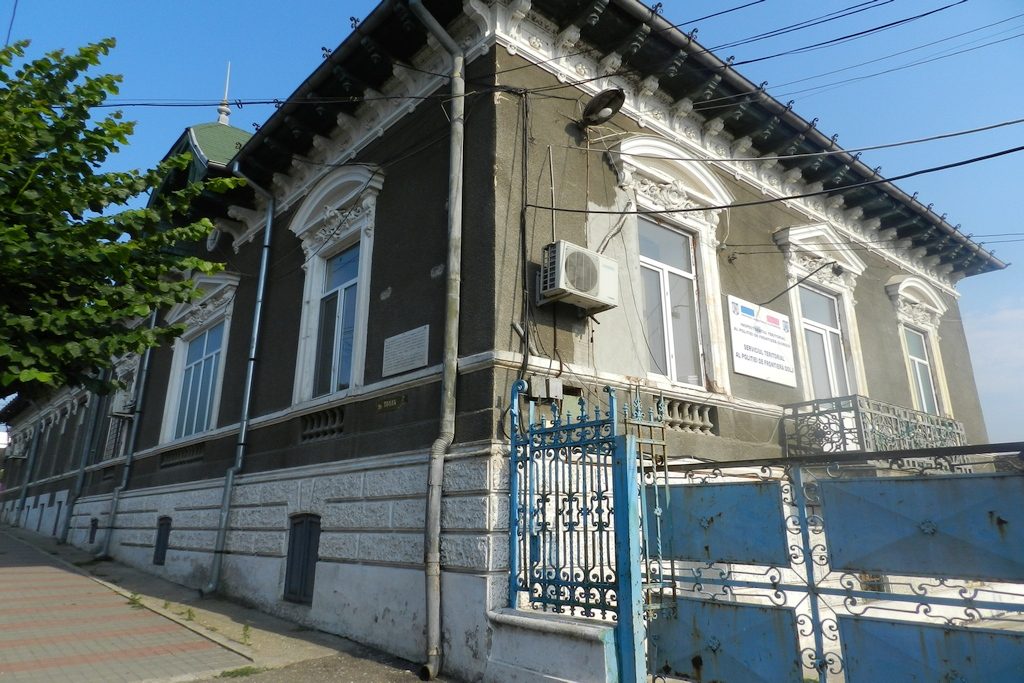

The Memorial House of P. Arsenie was built up in the year 1878. In the house from Calafat lived until 1927, together with his family – wife, daughter, niece with husband and great granddaughter.
After the year 1927 the house belonged to the frontier unities.
Dumitru P. Arssenie, native from Greece, the island Mykonos, became one of the counsels of the mayor of Calafat. Later on, he was named vice-president of the Bank of Calafat, founder of the Saint Nicholas Church. Also, he was one of the greatest supporters of the Greek Church and of the associated cult. He supported the campaign hospitals of Queen Elisabeth.
The first kept documentary certification, concerning Calafat, dates back to 1424: the Customs from Calafat, which in the centuries XV – XVI becomes the most important transition point for the commerce of Wallachia with the Balkan Peninsula. Another documentary certification dates back to the period of Basarab the Young – Țepeluș (November 1477 – September 1478). He, on the 3rd of April 1480, strengthens Tismania, where there was abbot Matei, the customs from Calafat with the burg, as other customs and ponds. From the 30th of April 1502 there dates back another charter, given by Radu the Great (1495 – 1508), who strengthens Tismany, whose Father Superior was Ioanichie, “the customs from Calafat, to be bequest and property, and to take the customs from Calafat.”
Also from the first years of the XVIth century date back other two prince charters, through which there was strengthened to the monastery Tismana the customs from Calafat. On the 26th of June 1508, Mihnea I the Bad strengthen for the monastery the customs from Calafat, which belonged to Tismania even from the old princes, and on the 1st of May 1510, from Târgoviște, Vlad the Young gives it to the iero-monarch Ioanichie and the monks from Tismana. On the 10th of May 1523, Vladislav the IIIrd, gives the comand to the monastery Tismana “to be free the monks from the Holy monastery Tismana to take his salt customs from the Vadul Vidinului from the Wallachians”, and one year later, the same one, strengthened for the Father Superior Istratie and the monks from Tismana “the customs from Calafat with the burg and the pond Bistreț with the customs”, as others “because they were ancient and they were heritages from the ancient princes”.
Such acts of giving, or more exactly of reinforcing the command over the good will from Calafat, were also given by Moise Vodă (the 12th of May 1529) and Mircea the Shepherd (the 26th of April 1547), Petru the Young (the 17th of April 1568). From the research of the documents of the era, results the fact that in the centuries XIV – XVII Calafat constituted the terminus point of an important commercial road, also known under the name of “The road of the salt”, his geographical position offering optimal positions for the development of active transit commerce. From here the abundant products of Wallachia arrived in the Balkan Peninsula, up to the borders of the Adriatic and also here, the merchandise of the Turk and Greek bargainers was entering in Muntenia and beyond, in Transylvania and in Hungary. Through the customs from Calafat there were sent in the Ottoman Empire great quantities of cereals, cattle, horses, sheep, fish, salt, wine, wax, honey and lumber. Through the same point entered in the country objects of clothing and adornments, oriental objects, carpets, spices. The importance which was given to Calafat in the centuries XVII – XVIII was also determined by the fact that, being situated in front of Vidin and at turning points, through it being elapsed the merchandise who came or went from the occident parts of Bulgaria, Macedonia, the western part of Serbia and even beyond, in Ragusa and Salmatia. Also from Calafat there could be easily connected the connection with Craiova, to which there passes the principal commercial road which circulated through Oltenia from East to West (Bucharest – Pitești – Slatina – Craiova – Cernet – Varciorova).
